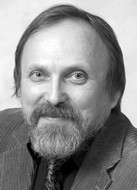Variations in total volume of national publications on matters of physical culture and sports for the period of 1917 to 2016
Фотографии:
ˑ:
PhD, Associate Professor S.A. Pronin1
PhD, Associate Professor E.O. Popov2
PhD, Professor V.D. Zverev3
PhD, Associate Professor D.D. Dalsky 3, 4, 5
1St. Petersburg State University, St. Petersburg
2Pacific Higher Naval School, Vladivostok
3National State University of Physical Education, Sports and Health named after P.F. Lesgaft, St. Petersburg
4Saint Petersburg National Research University of Information Technology, Mechanics and Optics, St. Petersburg
5Khrulev Military Academy for Logistics, St. Petersburg
Keywords: theoretical publications, practical publications, edition, book, abstract of dissertation, journal, publisher’s accounting sheet.
Background. Different forms of publications including their electronic versions are virtually the only way to protect the cultural and research heritage including the developments in the physical culture and sports (PCS) theory and practice. Despite the fact that the first studies to profile the flow of national publications on the matters of physical culture and sports were made quite long ago [13], integrated and consistent analysis of the publishing process has not been made so far. The relevant studies since then have been rather fragmented (by types of publications) or, when intended to consolidate the available data [2, 3], were fraught with serious procedural errors that often make their findings doubtful.
Objective of the study was to profile the flows of national publications on the matters of physical culture and sports theory and practice for the period of 1917 to 2016.
Methods and structure of the study. We applied bibliographic analysis as the core method to accumulate an empirical database for the study. First we analysed the relevant special bibliographic indices and materials classified into books [12]; abstracts of dissertations [11]; and journal publications [4-7].
The bibliography going beyond the chronological and/or thematic frame was mined from the St. Petersburg State University Sport Science System (SPSU SSS) that is presently ranked the largest national and international database of publications on the matters of the physical culture and sports theory and practice in Russian.
Statistical survey under the study addressed the 100-year period from 1917 to 2016 for the reason that since the October Revolution of 1917 the Russian orthographic system was seriously reformed both in spelling and alphabet: e.g. letter ‘ѣ’ was deleted from the alphabet.
Flows of publications were rated in the publisher’s accounting sheets (pas), with the technical specifications of the editions taken into account. In case of the electronic publications, 1 publisher’s accounting sheet was assumed to equal 40,000 characters.
Systemisation of the empirical database for the study was made based on the total publications (net of the classified materials) being broken down by the types of editions [8] namely: books, abstracts of dissertations and journals; with the popular and/or public elucidation editions excluded from the analysed samples.
Study results and discussion. Books on the matters of physical culture and sports were initially printed in Soviet Russia by a few publishers, but the publishing activity was virtually monopolised by the “Fizkultura i Sport” Publishing House by the early 1930ies. In the period of 1917 to early 1950ies, the flows of theoretical and practical publications on the subject were very unstable, albeit later on they showed a persistent growth trend, with the only stumble in the crisis period of early 1990ies: see Figure 1.
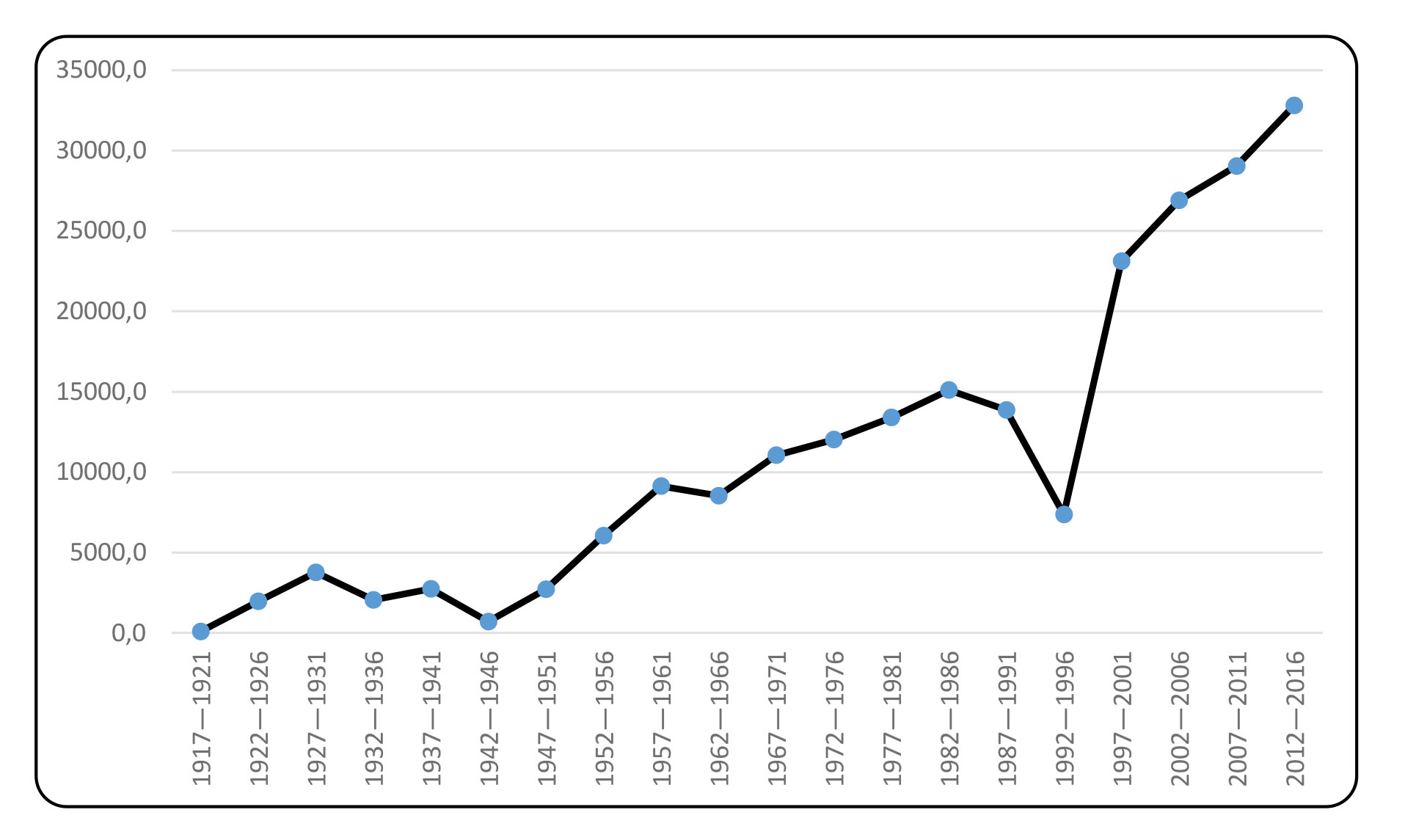
Figure 1. Flow of the total publications (in publisher’s accounting sheets) on the matters of physical culture and sports theory and practice in Russian for the period of 1917 to 2016 (the data of 2007–2016 are being further clarified)
The growth in the period was due to the efforts of the “Fizkultura i Sport” Publishing House and many minor corporate publishers.
Abstracts of dissertations were increasingly published since the Government of the USSR issued a decree “On the Academic Decrees and Titles” of January 13, 1934 [9] to reinstate PhD and doctoral degrees, with the first dissertations on the PCS matters defended in 1937−1938. Since then the flow of abstracts of dissertations was generally on the rise with a few suspensions due to the changes and amendments to the relevant qualification requirements and standards: see Figure 2.
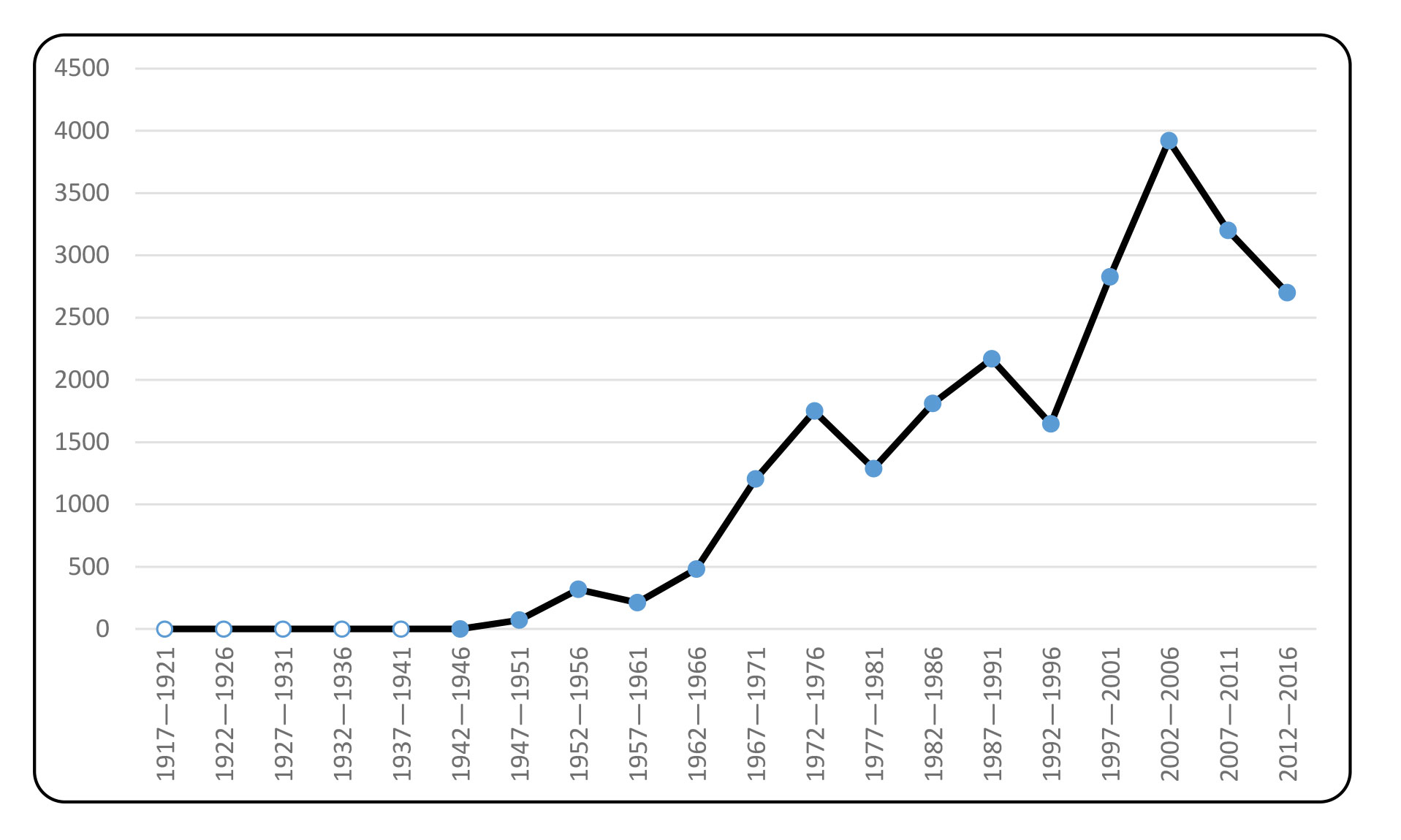
Figure 2. Flow of abstracts of dissertations (in publisher’s accounting sheets) on the matters of physical culture and sports theory and practice in Russian for the period of 1917 to 2016 (note that the data of 2007–2016 are being further clarified)
Journal publications were pioneered by the “Russkiy Sport” Journal that was popular prior to and after the October Revolution of 1917 and was closed in 1919 [2]; it should be noted, however, that the Journal published little practical and even less theoretical materials at that time. The publishing activity was soon resumed by a few Moscow- and Leningrad-based physical education and sport editions (e.g. “Fizicheskaya Kultura” and “Vsevobuch i Sport” Journals) albeit the flows of materials were very modest until 1925−1926 when the “Teoriya i Praktika Fizicheskoy Kultury” (Engl. Theory and Practice of Physical Culture) edition was established as an attachment to the popular “Izvestiya Fizicheskoy Kultury”. In 1927 it was upgraded to the independent “Teoriya i Praktika Fizicheskoy Kultury” (TPFK) Journal that very soon took the lead as the first national periodical on the matters of physical culture and sports theory and practice [10] and soon effectively monopolised the flow of the relevant theoretical and practical research materials. In the period of 1932-1936, however, the Journal was not printed, and the relevant materials were occasionally published at that time only by the “Fizkultura i Sport” Journal.
After the Great Patriotic War (since 1945), the TPFK resumed its publishing activity with the circulation stepped up by 25% to 5.0 pas. However, the demand of the fast-growing mass physical education and sports movement in the country was much higher than the supply of modern practical materials, with the public interests often going far beyond the statutory coverage of the TPFK. This was the reason why a few new special journals including the “Legkaya Atletika”, “Sportivnye igry” and “Fizicheskaya Kultura v Shkole” were founded in the mid-1950ies. As a result, the flow of the PCS-related theoretical and practical materials was soon doubled – net of the popular editions like the “Sportivnaya Zhizn Rossii”, “Sport v SSSR” and “Sport za Rubezhom” Journals that we excluded from the statistics reported herein for the reason that their coverage has been dominated by popular materials intended for the public elucidation purposes only.
The socio-political crisis of the early 1990ies forced many sport editions to close (including “Sportivnye Igry” Journal, “Nauchno-sportivny Vestnik” etc.) and others had to cut down their publishing business; as a result, the flow of materials published in periodicals had drastically sagged at that time. Since the mid-1990ies, however, the publishing activity showed a fast recovery trend that came to a real boom in the publishing business in the early 2000ies with the PCS-related coverage reported to grow more than three times to the mid-1980ies level: see Figure 3.
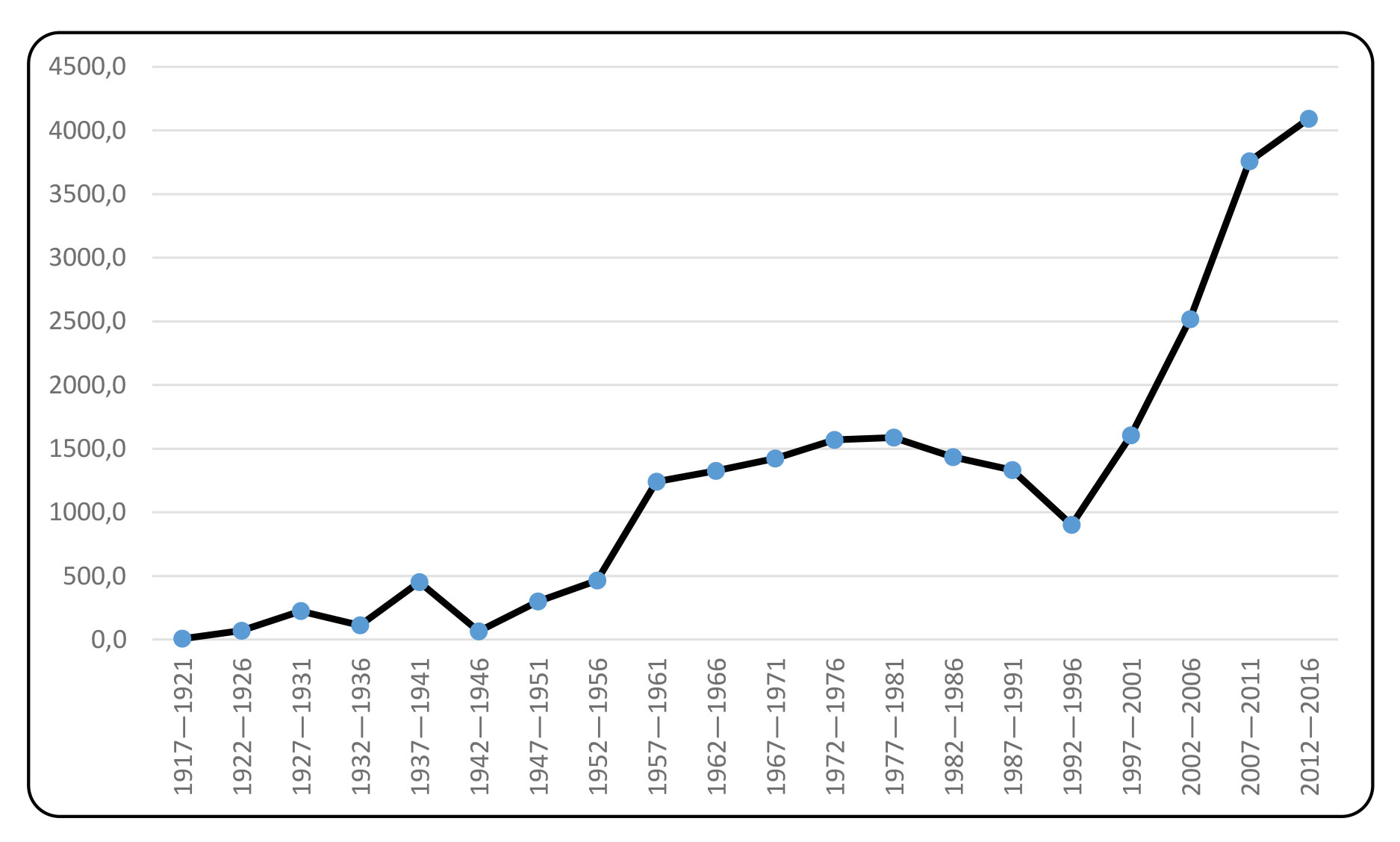
Figure 3. Flow of journal publications (in publisher’s accounting sheets) on the matters of physical culture and sports theory and practice in Russian for the period of 1917 to 2016 (note that the data of 2007–2016 are being further clarified)
It should be noted that the post-2000 statistical data reported herein cover only the journals formally listed by the Russian Attestation Commission (RAC) in the List of Physical Culture and Sports Editions (see the RSCI website) that includes 14 editions among which the Kiev-based “Nauka v Olimpiyskom Sporte” Journal; plus 3 journals with other statutory specialisations, namely the “Adaptivnaya Fizicheskaya Kultura”, “Lechebnaya Fizkultura i Sportivnaya Meditsina” and the “Sportivnaya Meditsina: Nauka i Praktika” editions.
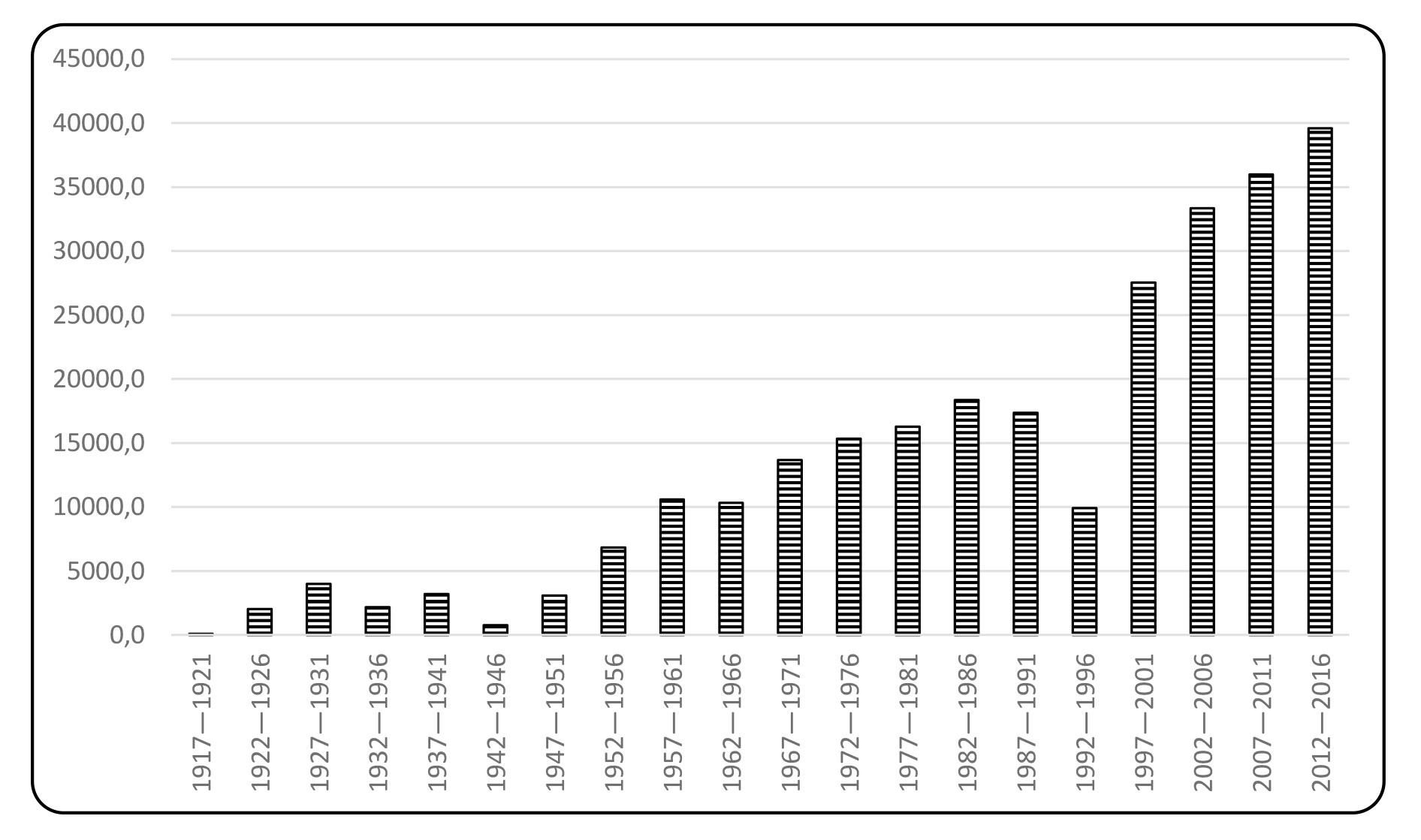
Figure 4. Flow of the total publications (in publisher’s accounting sheets) on the matters of physical culture and sports theory and practice in Russian for the period of 1917 to 2016 (the data of 2007–2016 are being further clarified)
Conclusion
- The total flow of the PCS-related publications for the period of 1917-2016 is estimated at 270,500 publisher’s accounting sheets (pas).
- The above flow may be classified into books, abstracts of dissertations and journals estimated at 82.2%, 8.7% and 9.1% of the total flow, respectively.
- The total flow of the national publications on the matters of physical culture and sports theory and practice has been growing steadily since 1950ies (Figure 4), with the only stumble in the crisis period of the early 1990ies.
- The growth of the national publications on the matters of physical culture and sports theory and practice may be visualised for understanding as a 600-meters-high stack of standard А4 sheets (1800 characters per sheet).
References
- Asaulov V.F. Pechat kak effektivnoe sredstvo formirovaniya sovetskoy sistemy fizicheskogo vospitaniya naroda (1917–1925 gg.). Avtoref. dis. kand. ist. nauk [Press as effective tool for building Soviet national physical education system (1917-1925). PhD diss. abstract]. Kiev: Shevchenko KSU publ., 1989, 24 p.
- Bagaev M.V. Dinamika kolichestva sportivnykh zhurnalov v Sovetskoy Rossii–SSSR do nachala Velikoy Otechestvennoy Voyny (1918–1941 gg.) [Dynamics of the number of sports journals in Soviet Russia-USSR before the Great Patriotic War (1918-1941)]. Uchenye zapiski un-ta im. P.F. Lesgafta, 2015, no. 12 (130), PP. 33-37.
- Baranov V.V. Sportivnaya pechat Rossiyskoy Federatsii. Formirovanie novoy sistemy (90-e godyi). Avtoref. dis. kand. filol. Nauk [Sports press of the Russian Federation. Formation of a new system (90s). PhD diss. abstract]. Moscow, 2001, 28 p.
- Elevich S.N., Losin B.E., Makarov Y.M., Pronin S.A. Bibliograficheskiy ukazatel statey zhurnala «Sportivnye igry» (1955–1992) [Bibliographical reference of articles in the journal Sportivnye igry (1955-1992)]. St. Petersburg: Olimp-SPb publ., 2009, 284 p.
- Grigoryev V.I., Malinina S.V., Pronin S.A. Bibliograficheskiy ukazatel statey zhurnala «Teoriya i praktika fizicheskoy kultury»: v 3 kn. [Bibliographical reference of articles in the journal Teoriya i praktika fizicheskoy kultury: in 3 vol.]. SPbSUE, St. Petersburg: [s.n.], 2005, Vol. 1: (1925–1964), 286 p.; Vol. 2: (1965–1984), 342 p.; Vol. 3: (1985–2004), 306 p.
- Pronin S.A., Titorova O.N., Karpushko N.A. Bibliograficheskiy ukazatel statey zhurnala «Fizicheskaya kultura v shkole» (1958–2007 gg.) [Bibliographical reference of articles in the journal Fizicheskaya kultura v shkole (1958-2007)]. St. Petersburg: Olimp–SPb publ., 2008, 399 p.
- Losin E.A., Pronin S.A., Sivko L.I. Zhurnal «Legkaya atletika» (1955–1996): bibliogr. ukaz. [Journal Legkaya atletika (1955-1996): Bibliographical reference]. St. Petersburg Lesgaft SAPC. St. Petersburg: [s.n.], 2000, 334 p.
- Izdaniya. Osnovnye vidy. Terminy i opredeleniya: GOST 7.60–2003 / Mezhgosudarstvenny sovet po standartizatsii, metrologii i sertifikatsii [Editions. Main types. Terms and definitions: GOST 7.60-2003 / Interstate Council for Standardization, Metrology and Certification]. Minsk; Moscow: Izd-vo standartov publ., 2004, IV, 36 p.
- Ob uchenykh stepenyakh i zvaniyakh: Postanovlenie SNK SSSR ot 13.01.1934, no. 79 [On academic degrees and titles: Decree of the Council of People's Commissars of the USSR 13.01.1934, no. 79]. Available at: https://ru.wikisource.org/wiki.
- Pronin S.A. Teoriya i praktika fizicheskoy kultury: 90 let na sluzhbe sportivnoy nauki [Teoriya i praktika fizicheskoy kultury: 90 years of serving for sports science]. Moscow: Teoriya i praktika fiz. kultury i sporta publ., 2015, 51 p.
- Pronin S.A. Bibliograficheskiy ukazatel avtoreferatov dissertatsiy po problemam fizicheskoy kultury i sporta (1937–2005): v 2 Vol. [Bibliographical reference of theses abstracts on the problems of physical culture and sports (1937-2005): in 2 Vol.]. St. Petersburg: [s.n.]; Pskov: Gimeney publ., 2006, Vol. 1 [A–L], 290 p.; Vol. 2 [M–Ya], 287 p.
- Pronin S.A. Dvadtsaty vek Rossiyskoy nauki o fizicheskoy kulture i sporte: bibliogr. ukaz.: [v 3 kn.] [XXth century of Russian physical culture and sports science: Bibliographical reference [in 3 vol.]]/ NGU im. P.F. Lesgafta. St. Petersburg: Olimp-SPb publ., 2010. Vol. 1: 1900–1969, 268 p.; Vol. 2: 1970–1984, 307 p.; Vol. 3: 1985–1999, 276 p.
- Toropov N.I. Fizkulturnaya pechat v SSSR [Physical culture press in the USSR]. Teoriya i praktika fiz. kultury, 1957, vol. XX, no. 7, pp. 551-553.
Corresponding author: pro-555@mail.ru
Abstract
The study makes the first attempt in the history of national research to analyse the flows of the total national publications on the matters of physical culture and sports theory and practice for the period of 1917 to 2016. The total flow is broken down by three types of editions namely: books, abstracts of dissertations and journals. The study reports the total flow of the publications for the above study period making up 270,500 publisher’s accounting sheets, with the shares of books, abstracts of dissertations and journals estimated at 82.2%, 8.7% and 9.1%, respectively. The study data and analysis show that the total volume of the national publications on the matters of physical culture and sports theory and practice has been on the rise since 1950ies (see Figure 4), with the only stumble in the crisis period of early 1990ies.

